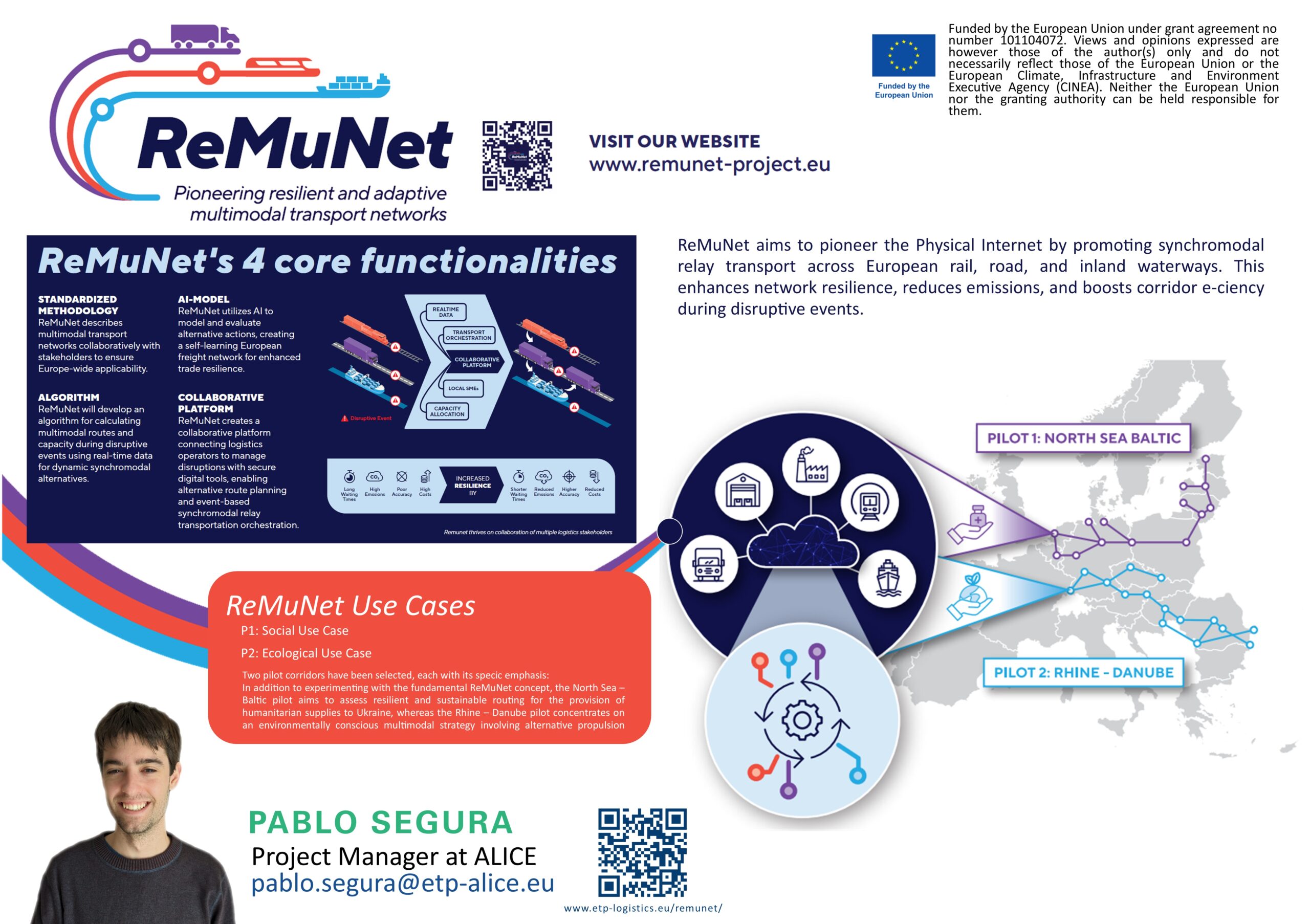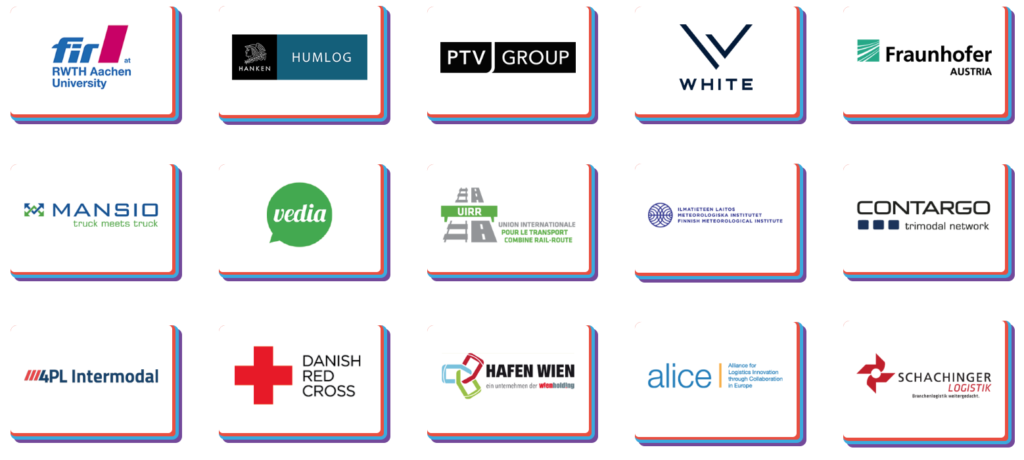ReMuNet identifies and signals disruptive events and assesses their impact on multimodal transport corridors. It reacts quickly and seamlessly upon disruptive events in real-time. It supports TMS-providers to improve route planning resilience. ReMuNet communicates alternative, pre-defined, multimodal transport routes to logistics operators and subsequently to truck drivers, locomotive drivers and barge captains. Through this, it enables a faster and adaptive multimodal network response. ReMuNet orchestrates route utilization, suggests transshipment points and optimizes capacity allocation, minimizing damage and shortening the recovery time.
As trailblazer for the Physical Internet, ReMuNet pursues the vision to enable and incentivize synchro-modal relay-transport on European rail, road, and inland waterways to increase the holistic network resilience. It significantly reduces emissions and boosts freight transport corridor efficiency in case of disruptive events.

1. A standardized method to describe multimodal transport networks. The proposed standard is derived from existing approaches and developed together with critical stakeholders to ensure Europe-wide practicability and acceptance
2. An algorithm capable of calculating multimodal route alternatives and capacity utilization in the face of disruptive events. It uses real-time data for dynamic synchromodal alternative route planning
3. A collaborative platform connecting relevant freight operators and enables them to manage disruptions. This is done by providing secure and resilient digital logistic and network management tools enabling alternative route planning information and orchestrating event-based synchromodal relay transportation
4. Using Reinforcement Learning to model and evaluate alternative courses of action, providing the basis for a self-learning, adaptive multimodal European freight transport and logistics network
Website: https://remunet-project.eu/
LinkedIn: https://www.linkedin.com/company/remunet-project/
X (Twitter): @ReMuNetProject
Project Manager at ALICE: Pablo Segura
Alice members in the consortium:
Consortium:

All Project REMUNET related past events, news and documents
